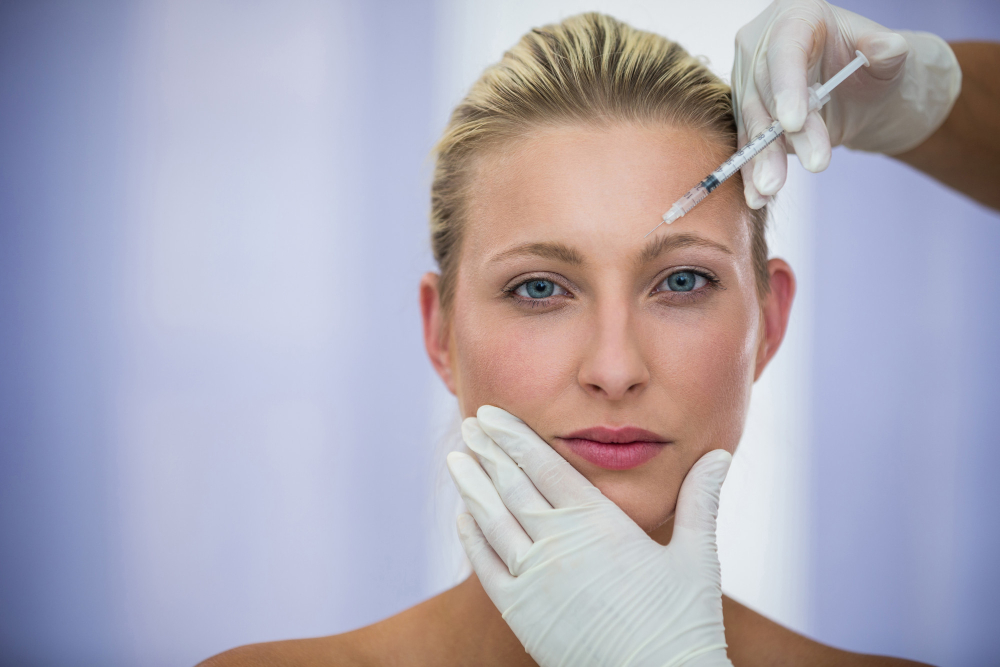Skin & Esthetics
Botox
By H.S. (staff writer) , published on January 05, 2022

Medicine Telehealth Health
Botox is a muscle relaxant and paralyzer. It may help minimize skin wrinkles and aid in the Treatment of some medical disorders when used in tiny dosages. Botox is a protein derived from Botulinum toxin, a toxin produced by the bacteria Clostridium botulinum. This toxin is identical to the one that causes botulism.
What is Botox?
Botox is a toxin, but when used properly and in little amounts, it may be beneficial. It is used both cosmetically and medicinally. Botox is derived from the bacterium Clostridium botulinum, which is found in a variety of natural environments, including soil, lakes, woods, and the intestines of animals and fish. C. botulinum bacteria and spores that occur naturally are typically harmless. Only when the spores change and the cell population rises do problems develop. At some time, the bacteria produce Botulinum toxin, the lethal neurotoxin that causes botulism.
Botulinum toxin is a very toxic substance. According to some experts, 1 gram of the poison in its crystalline form might kill 1 million people, while a few of kilos could kill every person on the earth.
How does it function?
Botulinum toxin is a neurotoxin. These compounds affect the neurological system, interfering with the nerve signaling pathways involved in muscle contraction. This is how the medication temporarily paralyzes the muscles. Nerves produce a chemical message called acetylcholine at the junction of nerve terminals and muscle cells to cause any muscle to contract. Botox injections inhibit the release of acetylcholine, a neurotransmitter that inhibits muscular contraction. In this manner, the toxin aids in the de-stiffening of the muscles.
Medical applications
Botox is also used by healthcare experts to treat a range of medical disorders, the majority of which involve the neuromuscular system. Botox has been authorized by the FDA for the following indications. Unless otherwise noted, the approval is valid for those aged 18 years or older:
upper limb spasticity, in those older than 2 years crossed eyes, or strabismus, in those older than 12 years severe underarm sweating, or hyperhidrosis preventing migraine in those with headaches lasting at least 4 hours on 15 or more days per month reducing symptoms of an overactive bladder caused by a neurological condition if anticholinergic medications do not help eyelid spasms, or blepharospasm, caused by dystonia.
Side effects and Risks
Botox injections are typically well-tolerated, and adverse effects are infrequent. However, depending on the purpose for the injections and the individual's reaction, Botulinum toxin may have a number of undesirable side effects, including the following:
• a dry eye, an unsettled stomach, and numbness as a result of cosmetic usage
• a headache, slight discomfort, edema, or bruising around the injection site
• transient lowering of the eyelids temporary weakening or paralysis of neighboring muscles
• urinary difficulties after urinary incontinence therapy a deterioration of neuromuscular abnormalities
• spatial disorientation or double vision after strabismus therapy corneal ulceration following blepharitis treatment cardiovascular problems, including arrhythmia and myocardial infarction
Individuals should avoid Botox if they have:
- A hypersensitivity to it or an allergic reaction to it an infection at the injection site
- There are worries that, depending on the kind of therapy, Botox's effects may extend beyond the injection site, perhaps resulting in symptoms such as trouble breathing.
- This is more common in certain people than others, and hereditary factors may play a role.
References
[1] Davletov B, Bajohrs M, Binz T. Beyond BOTOX: advantages and limitations of individual botulinum neurotoxins. Trends in neurosciences. 2005;28:446–452.
[2] Nayyar P, Kumar P, Nayyar PV, et al. Botox: broadening the horizon of dentistry. Journal of clinical and diagnostic research: JCDR. 2014;8:ZE25.
[3] Burroughs JR, Anderson RL. Introduction to Botox. Pearls and Pitfalls in Cosmetic Oculoplastic Surgery. Springer; 2008. p. 293–293.
[4] Davis JI, Senghas A, Brandt F, et al. The effects of BOTOX injections on emotional experience. Emotion. 2010;10:433.
Find articles related to: Medicine Telehealth Health
More articles about Skin & Esthetics
Back to the Health Tips Index




